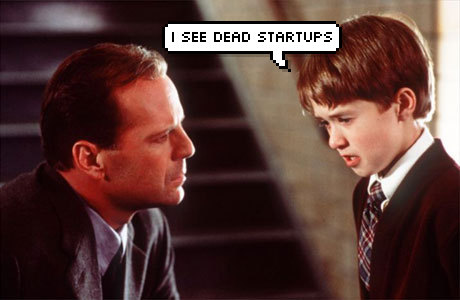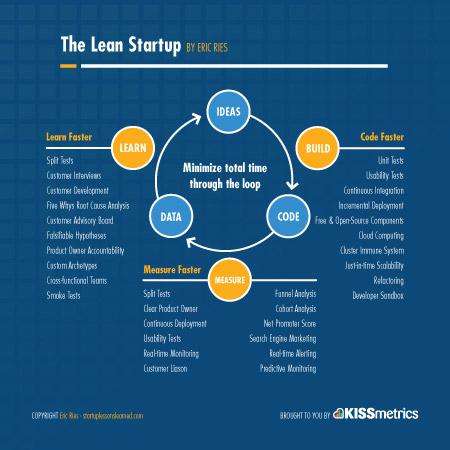 CB Insights interviewed startup founders about why they failed, and sorted these reasons into 20 distinct categories. You’ll notice that the sum of the percentages exceeds 100%, because many startups fail for more than one reason. This is not a complete list of the causes of failure, just those you can control, we hope that you’ll find some necessary items that will help you in the future.
CB Insights interviewed startup founders about why they failed, and sorted these reasons into 20 distinct categories. You’ll notice that the sum of the percentages exceeds 100%, because many startups fail for more than one reason. This is not a complete list of the causes of failure, just those you can control, we hope that you’ll find some necessary items that will help you in the future.
- There is no need in the market (42%)
The main problem here is that an entrepreneur sees the world through a prism of perception and I am sure he is right. Accordingly, he often runs behind the idea of blindly believing in it and not looking around, that is, as it does not project to the end user, but rather for themselves.
This problem may have very different views: it is fundamentally wrong concept, and the lack of studies at the start, and try to make the most feature-rich product, which leads to its excessive complexity and the rejection by the market, and so long to develop that market changes and the product it becomes unclaimed even before its release.
There is some problems such a never-ending projects with high complexity that have already gone out of date during the development process. And that’s not to mention the more mundane cases where the startupper does not even know that such ideas have long been working in the market.
- Ran out of cash(29%)
Do you often see new projects, which were ready and had the extra money in budget? This happens very rare. Budget must be taken with some reserve.
There are thousands stories where were great projects which had no money, and they were closed. The opinion that the investment is easy to find – is a myth. At best, you can find a very small amount of cash for a significant share in the company, but this money will likely still not be enough.
Spending money for stupid reasons at the very beginning of your project – it is a common problem. The principle of “lean startup,” for some reason, is followed by few startups from hundreds. Excessive savings, however, also does not lead you to the desired result. We have seen countless cases where startups tried to save budget on the things on which the save was not necessary. Cost of different specialists may differ at times, and quality – in dozens of times.
- Not the right team (23%)
Web projects – are a highly intelligent products, because the people here – are the main thing. The team stands here in the first place, because the right people can cope with almost any problem that described below.
Many people select specialists from the point of view of the price of work, rather than in terms of competencies. We are not saying that you need to choose the most expensive ones, no. It is necessary to choose the most competent specialists in the specific narrow topics, and if you’re lucky and you’ll find two or more competent people, you can choose using secondary parameters, including price.
Sometimes you need more than one specialist, but a whole team of experts in a narrow field. Then the problem with the team is even more acute, because the quality of specialized teams is extremely small, and assembling team from scratch is very risky.
The basis of a successful team is a triangle of: high-professional manager sales specialist and cool technical specialist. These people are best to keep in the state, the rest specialist you can find from outsource.
- Get outcompeted (19%)
The market has been saturated, there are few unoccupied niches. First you need to see if there are a similar ideas like yours: if there are, competing with the leader will be extremely difficult.
This is a common strategy when someone starts to do copy of successful project. This is a very bad idea, it is almost doomed to failure. If you are making some copy of an existing product, you’ll need a large budget for the implementation and marketing, as well as the need to think about some key differences between your product and market leaders.
People often make the product without considering the possibilities of major market players. Also they make additions to existing products as side services. This is also a very slippery path: existing projects have users and resources for quick implementation such a services as part of their products. Before starting the project, you need to spend a lot of time for market research and competitors.
- Pricing/Cost Issues (18%)
This problem originates from ignorance of the market and consumers. You can invest millions of dollars into a useful service, but the value of the product may be lower than its value – therefore, with this price no one will buy it, but with a lower price, it will not pay off.
Sometimes team is not doing research about competitors ‘ prices, and the project does integrate in the market price – even in today’s world pricing methodologies are abound.
- Poor product (17%)
Here you can see the issue when startups are trying to save budgets on UI and UX. You won’t find any successful products that have managed to dispense with phase interface design. Of course, “in the terms of startup,” there is no technical documentation, but even on an Agile project you should do designing.
Also there is another side of this issue when you have good interface, but lacks functionality. You should always make MVP, but you should not go too far and get rid of the vital functions.
- No business model (17%)
Sounds weird? Nevertheless, it is a reality: initially many startups do not think about how they will earn who and how much they will pay for what pay. This so-called stage of customer development. It is when you are making a startup in the name of startup.
You must have expert who has knowledge about project monetization. Many startups think that at first you must run the project, and only then it will be clear how to earn from it. It is a mistake, you must think about monetization at once.
- Poor Marketing (14%)
Good practice it’s when marketing costs exceeds the development costs in several times. In reality, most of startupers consider future development costs and do not consider the marketing cost. Somehow, they believe that the main thing is to start the project, and if the product is cool, it won’t need any promotion. History knows cases where a product promotes itself, but these are exceptions from the rules, and they are all connected with innovative products which had not had competitors.
Any startup must have a marketing plan and costs estimates. It will be adjusted, and probably more than once, but you need get an idea about sales channels and needed costs ASAP.
Many startups that had being launched on competitive markets with poor marketing budgets had shown very weak results. Innovators who did something unique and new are hoping that the product will be interesting and understandable for everyone. But market works the other way. Sometimes innovative ideas need to create a market literally .
- Ignore Customers (14%)
On the one hand, it is important to continuously collect and process feedback from users. On the other hand, users do not always know what’s the best, and even do not always understand what they really want. But anyway, you must collect feedback purposefully.
Next you need to test changes and do as many iterations as possible. Frequency of iterations and its implementations causes product success and increases its growth. Though here it is worth remembering the words of a classics: “If Henry Ford would have listened only to users, he would have been breeding faster horses.”
- Product Mis-Timed (13%)
Product may be realized too soon or too late. More often we can see the second option, when startups are polishing their product for so long that the market is simply changing: competitors appear, user needs are changing.
Rarely the development is too fast, and the market has not been ready yet for this product. Users have not changed their habits, or the technology is too innovative, or product does not have sufficient technical basis for the implementation.
We are looking forward to meeting you on our website soshace.com







